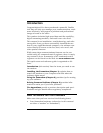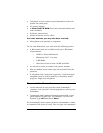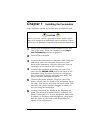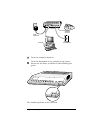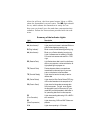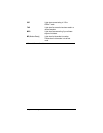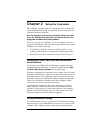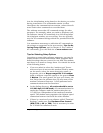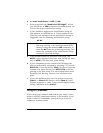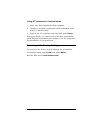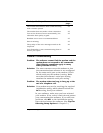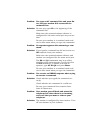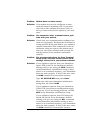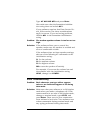
Chapter 2 Using the Faxmodem 13
into the initialization string based on the device you select
during installation. The commands remain in effect
throughout the communications session, unless the soft-
ware sends other commands to override them.
The software uses other AT command strings for other
purposes. For example, when you make a telephone call,
the software inserts AT commands in a dial string before
the telephone number you are calling. You can typically
use the AT command strings which are provided with the
software.
It is sometimes necessary to add other AT commands to
the strings as suggested in the next section, Tips for Se-
lecting Setup Options, and in Chapter 3. For a table of
AT commands, go to the Web site at www.modems.com.
Tips for Selecting Setup Options
In setting up some older software programs, you may be
asked to enter certain information. Most programs have
default settings that are correct for use with this modem,
and there is no need to change them. You should be aware
of the following items:
• If you are asked to select the “modem type” from a
menu and you do not see this modem listed by name
on the menu, select the most descriptive name, or
keywords, such as Hayes-compatible V.34 modem
(with or without a specific speed) or the generic Class
1 Modem. The more generic the type you choose, the
less likely that the software lets you use some of the
modem’s advanced features. It still performs basic
communications and fax functions.
• • In the dialing directory, all entries should be set to
115,200 bps (115.2K baud). All communications be-
tween the computer and the modem take place at
115,200 bps, independent of the modem-to-modem
speed. The modem auto-negotiates the highest speed
connection between itself and the other modem.
• If there is a section of your software called “Terminal
Settings,” make sure that Hardware Flow Control
(RTS/CTS) is ON (or YES). This is necessary in order
for V.42bis file transfers to work.



